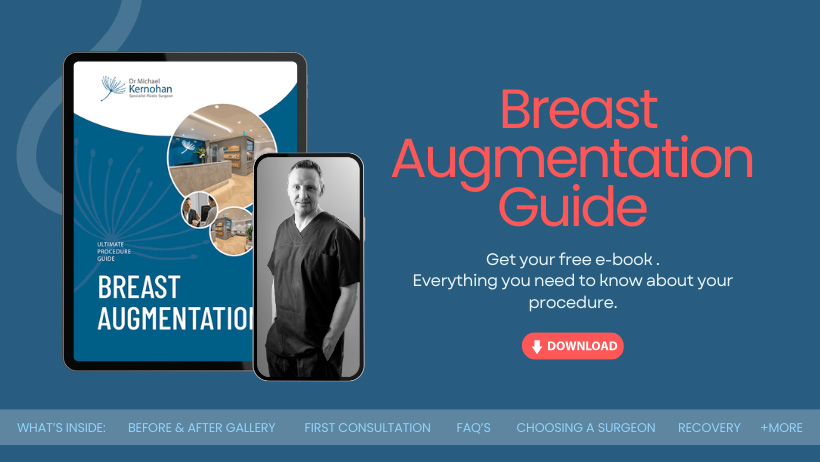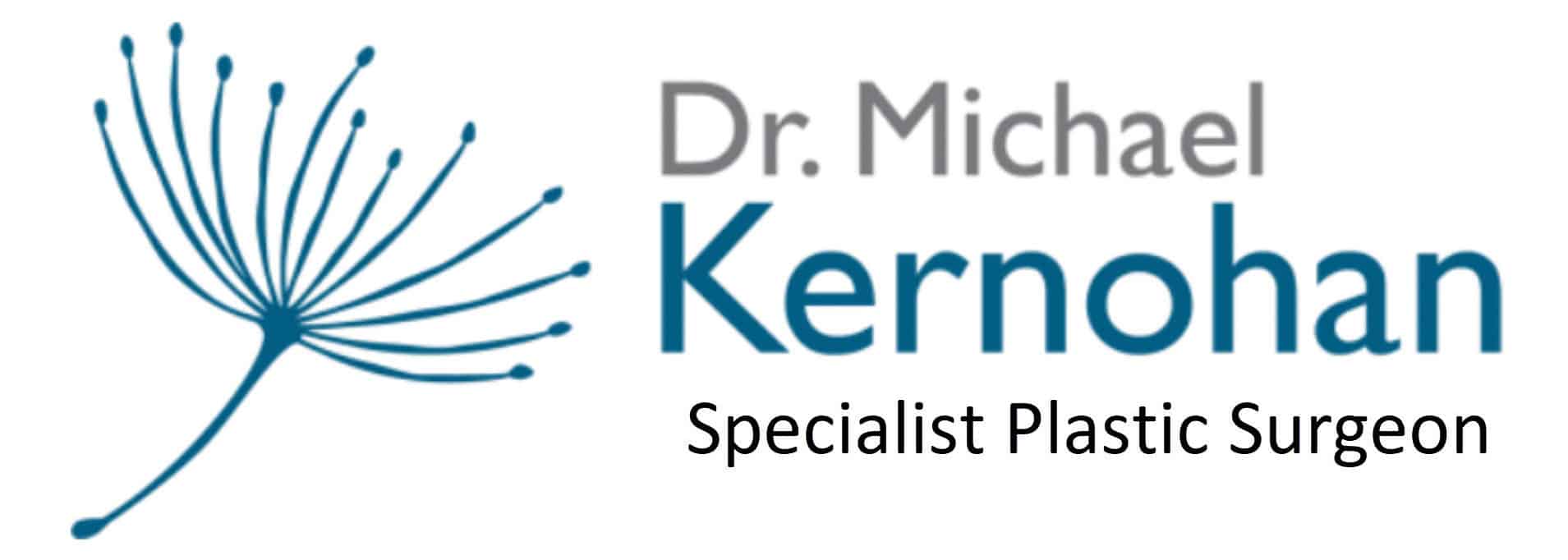When to Start Exercise after Breast Augmentation
Breast augmentation surgery represents a significant decision for many. Women considering the procedure should be aware that the path to full recovery and the attainment of optimal results extends beyond the surgical procedure itself. Exercise, when approached correctly, plays a fundamental role in this journey. Sydney Specialist Plastic Surgeon Dr Michael Kernohan aims to guide you through the safe resumption of exercise after breast augmentation surgery, providing insights into the appropriate exercises, timeline, and precautions to ensure a smooth and effective recovery process.
What Is Breast Augmentation
Breast augmentation is a surgical procedure aimed at modifying the size and shape of the breasts. This operation can involve various techniques, including the placement of implants or fat transfer, depending on individual preferences and medical advice. Despite the differences in surgical methods, the goal remains consistent: to achieve larger breasts. Patients need to have a clear understanding of the procedure, including the expected recovery timeline and any potential impact on physical activities post-surgery.
Are you a good candidate for surgery?
Take our plastic surgery quiz to find out if you’d be a good candidate and if you are ready for cosmetic surgery.
Take the Quiz
Exercise after Breast Augmentation Surgery
Incorporating exercise after breast augmentation is essential for several reasons:
- Enhances circulation which supports healing
- Reduces the risk of complications such as blood clots
- Promotes strength and flexibility in the upper body
- Aids in managing swelling and discomfort during recovery
Despite the benefits, it’s imperative to approach exercise with caution immediately following your procedure. The type, intensity, and duration of physical activities should be adjusted to accommodate your recovery stage. Starting with gentle movements and gradually reintroducing more strenuous exercises will not only protect your surgical results but also facilitate a smoother and more efficient healing process.
Short Walks and Gentle Stretches for the First Week after the Surgery
In the immediate aftermath of breast augmentation surgery, your body needs time to initiate the healing process. During the first week, focusing on rest and recovery is essential. Physical exertion should be kept to an absolute minimum to mitigate any risk of complications. Activities in this period are limited to:
- Short, gentle walks around your home to maintain circulation
- Light stretches, as advised by Dr Kernohan, to ease discomfort
These exercises aim to enhance your recovery by promoting blood flow and preventing stiffness without compromising the healing of your incisions. It’s important to continue prioritising rest and to adhere to any specific guidance provided by Dr Kernohan regarding movement and activity levels.
Light Exercise Starting with Week 2
After the initial recovery period, you may be ready to reintroduce more substantial forms of exercise gradually. Between two to four weeks post-operation, focus on light exercises that do not put undue pressure on your chest. Suitable activities during this stage include:
- Brisk walking, taking care not to overexert yourself
- Low-impact cardiovascular exercises, such as cycling on a stationary bike
- Gentle yoga or Pilates, avoiding poses that stretch or compress the chest excessively
It is essential to monitor your body’s response to these activities closely. Any signs of discomfort or undue pressure on the surgical area should prompt an immediate return to lighter activities. Communication with Dr Kernohan or a physical therapist specialised in post-operative recovery can provide personalised advice, ensuring that your return to exercise is both safe and beneficial.
Incorporating these exercises into your recovery plan can significantly impact your overall healing process, promoting strength and flexibility without risking your surgical outcomes. As always, the key is to progress at a pace that feels right for your body, ensuring that each step forward in your exercise regimen contributes positively to your recovery journey.
Moderate Exercises Starting with Week 4
By the time you reach four to six weeks post-breast augmentation, your body will have made significant progress in the healing process. This period allows for a cautious introduction of moderate exercises, focusing on activities that do not directly stress the chest or upper body. It’s essential to maintain a balance between staying active and respecting the boundaries of your recovery. Suitable exercises include:
- Continued walking, gradually increasing the pace and distance as comfort permits
- Leg and lower body strength training exercises, such as squats and lunges, using body weight or light weights
- Introduction of elliptical training or stationary biking at a moderate intensity, ensuring no upper body strain
During this phase, it’s vital to observe how your body responds to increased physical activity. Any discomfort, especially in the chest area, should be a signal to reduce intensity or revert to lighter exercises.
Resuming Regular Exercise Starting with Week 7
After six weeks, many individuals are ready to resume their regular exercise routines, albeit with some modifications to accommodate their new physique. It is now possible to gradually incorporate more strenuous activities, including:
- Light to moderate upper body strength training, with careful monitoring of the chest area
- Increased intensity in cardiovascular exercises, such as jogging or using an elliptical machine
- More advanced yoga or Pilates classes, with modifications to avoid placing direct pressure on the breasts
It’s imperative to continue listening to your body and adjusting your exercise intensity based on any feedback it provides. Resuming high-impact activities or heavy lifting should only be done with Dr Kernohan’s approval and when you feel completely comfortable and pain-free during and after workouts. This cautious approach ensures the longevity of your surgical results and supports ongoing health and fitness.
Exercises to Avoid after Breast Augmentation
Even as you reintegrate exercise into your lifestyle, certain activities should be approached with caution or avoided altogether to protect your surgical outcomes. Exercises to steer clear of include:
- High-impact exercises that cause excessive movement or bouncing of the breasts
- Heavy weightlifting or upper body exercises that put significant pressure on the chest muscles
- Any activity that involves pressing, pushing, or pulling movements that could stress the chest area prematurely
Adhering to these guidelines helps prevent complications and ensures the integrity of your breast augmentation results. As you increase your activity levels, remember that gradual progression is fundamental to a safe and effective return to fitness.
Download Dr Kernohan’s Breast Augmentation Surgery Guide

Warning Signs after You Resume Exercise after Breast Augmentation
As you reintegrate exercise into your routine after breast augmentation, paying close attention to your body’s signals is imperative. Recognising warning signs is a critical aspect of safely navigating your recovery and preventing injury. Some indicators that you may be pushing yourself too hard include:
- Sharp or persistent pain in the chest area
- Increased swelling or redness around the incisions
- Any sign of incisional separation or unusual discharge
If you encounter any of these symptoms, it’s advisable to cease the problematic activity immediately and consult with Dr Kernohan for guidance. This cautious approach ensures that minor issues can be addressed promptly, preventing them from escalating into more significant concerns.
Sports Bras for Exercise after Breast Augmentation
Selecting the appropriate sports bra is a crucial step in resuming exercise after breast augmentation. A well-fitted sports bra provides the necessary support to minimise movement and reduce the risk of discomfort or damage to the surgical area. Consider the following when choosing a sports bra:
- Opt for bras with adjustable straps and bands to achieve a snug, supportive fit as your body heals and changes shape
- Look for moisture-wicking fabrics to keep the area dry and reduce the risk of irritation
- Ensure the bra offers adequate coverage and support without overly compressing the breasts
Wearing the right sports bra during exercise not only enhances comfort but also plays a role in maintaining the aesthetic results of your surgery.
Nutrition and Hydration When Resuming Exercise after Breast Augmentation
Nutrition and hydration are foundational elements of a successful recovery from breast augmentation, especially as you return to physical activity. A balanced diet and adequate fluid intake support your body’s healing process, providing the energy needed for exercise and daily activities. Focus on:
- Protein-rich foods to aid tissue repair and muscle recovery
- Fruits and vegetables for essential vitamins and antioxidants
- Healthy fats to support overall health and energy levels
- Ample water intake to maintain hydration, especially before, during, and after exercise
Adopting a nutritious diet and staying well-hydrated will not only facilitate a smoother recovery but also contribute to your overall fitness and health as you resume your exercise regimen.
FAQs about Breast Augmentation

What are the different types of breast augmentation procedures available?
- Breast augmentation can be performed using breast implants or through fat transfer. Implants come in various materials, sizes, and shapes, including silicone gel and saline options. Each type offers distinct advantages and aims to achieve a specific look and feel. Fat transfer breast augmentation involves using liposuction to take fat from other parts of your body and injecting it into your breasts. This method is less invasive than implant surgery and offers a more natural result but might not achieve as significant an increase in size.
How do I choose the right size and type of implant for me?
- Choosing the right size and type of implant involves a combination of personal preference, body shape, and professional advice from your surgeon. During the consultation, Dr Kernohan will assess your body’s proportions, skin elasticity, and existing breast tissue. He might use sizers or 3D imaging to help visualise potential outcomes. It’s essential to communicate your goals and expectations clearly, as this will guide the recommendation for the most suitable implant type and size.
What is the recovery process like after breast augmentation?
- Recovery from breast augmentation varies by individual but generally involves a period of rest and limited activity immediately following the surgery. Most patients experience swelling, bruising, and discomfort, which can be managed with prescribed medication. It’s recommended to wear a support bra and avoid strenuous activities for the first few weeks. While many return to work within a week, full recovery and the final settling of the implants can take several months.
How long do breast implants last, and will I need replacement surgery?
- Breast implants are not designed to last a lifetime, and it’s possible you’ll need replacement surgery at some point. On average, implants can last between 10 to 15 years, although this varies depending on the individual and type of implant. Factors such as implant rupture, leakage (more common with saline), and changes in breast appearance over time due to aging, weight fluctuations, or pregnancy may necessitate replacement or revision surgery.
Are there risks associated with breast augmentation surgery?
As with any surgical procedure, breast augmentation comes with certain risks. These include:
- Capsular contracture: A condition where the scar tissue around the implant tightens, causing discomfort or changes in the breast’s appearance
- Implant rupture or leakage: The shell of the implant breaks down, releasing the contents into the breast implant pocket
- Changes in nipple or breast sensation: Some patients experience increased sensitivity, numbness, or a change in sensation, which can be temporary or permanent
- Infection and bleeding: Although rare, these can occur post-surgery and may require additional treatment
Further Reading about Breast Augmentation with Sydney Plastic Surgeon Dr Michael Kernohan
- Read more about Mini Breast Augmentation Sydney
- Read more about Recovery after Breast Augmentation Surgery
- Read more about How Can I Enlarge My Breasts?
- Read more about What are the most natural looking breast implants?
- Read more about What Is the Right Implant Placement Option?
- Read more about Exercise after Belt Lipectomy – Post Weight Loss Surgery
Medical References about Breast Augmentation
- Breast Augmentation – an overview – Science Direct
- Breast augmentation – Mayo Clinic
- Current Trends in Breast Augmentation: An International Analysis – Oxford Academic
- Breast Augmentation | Cosmetic Surgery – Stanford Medicine
- The long-term outcomes of breast implants studied – Medical News Today





